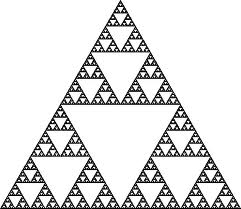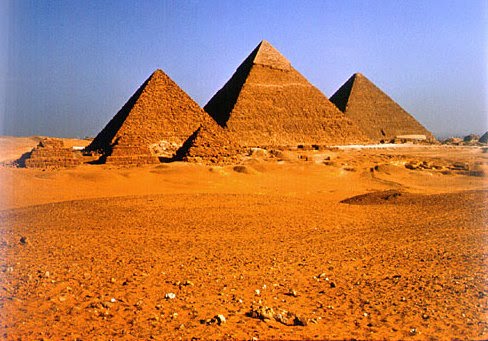
What is a Triangle? A Triangle is a one of the basic shapes of geometry: a polygon with three vertices and three sides. Triangles have a rich and complex history, one that not many really know about. Triangles seem to be everywhere . Today triangles can been seen in art, architecture, gospel principles, money, and in building material.
Buckminster Fuller, an architect in the 1950’s, popularized the use of triangles in building claiming that a triangle is “perfect form.” Fuller was not the first, to see the important uses of triangles. Their history dates back much farther than that.
In 3000 B.C. the Egyptians considered triangles to be sacred. Their “Sacred Triangle” being a 3-4-5 triangle was used often in the building of pyramids. Cairo Mathematical Papyrus, a written work from the Egyptians, gives us evidence that Egyptians were aware and used Pythagorean Triples, but they never generalized any formula for their findings. They were only interested in the empirical results of mathematics.

From 2100 B.C. to 1600 B.C. the Babylonians started to generalize theoretical problems with triangles, but still used triangles for the utilitarian purposes. They did use the Pythagorean Theorem in general settings, and discovered general formulas for the area of a triangle.
The Greeks, in 600 B.C., started to ask the fundamental question in mathematics: Why? Two Greek mathematicians, Herodotus and Proclus discovered that base angles in an isosceles triangle are equal, and two triangles are equal if they have one side and two adjacent angles equal. Pythagoras (572-480 B.C.) a native to Greece, discovered the Pythagorean Theorem and generalized its use to that of a right triangle. Euclid, another Greek mathematician, wrote Euclid’s Elements which gave rules and theorems about geometry and triangles. Today we can thank the Greeks for many formulas and geometric facts about triangles because they asked the question: Why, and derived by deductive reasoning, rather than experiments, generalizations about triangles.
Triangles can be made up of many different angles and side lengths. We have a vast selection of Triangles that we can choose from. This is a sheet that gives Facts, Formulas, and Postulates about triangle. As a teacher I would give each of my students a copy, so that they might have an all-in-one sheet about Triangles.
Works Cited